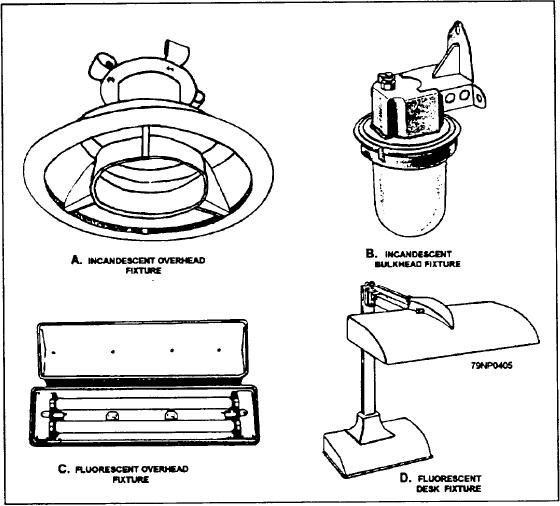
possible, ensure lamps are stored in spaces equipped
Handling
with a sprinkling system.
You should be extremely careful in handling, using,
Disposal
or replacing LPS discharge lamps. The electric
discharge lamp is designed for use in fixtures and
You may dispose of the LPS lamps at sea provided
circuits wired with the proper auxiliary equipment. Do
you observe the proper precautions. Break the
not scratch the glass, as the lamp is vacuum jacketed and
burned-out lamps and dispose of them according to the
may explode if broken or subjected to undue pressure.
manufacturer's instructions. This means breaking a few
If the outer jacket is broken, remove and replace the
lamps at a time in a dry container in a well-ventilated
lamp promptly. Avoid making contact with the arc tube
area, and then filling the container with water to
supporter to prevent an electrical shock hazard. Before
deactivate the sodium. Observe caution when breaking
the lamps since the tubes may explode. Wear eye
you replace the lamp, ensure the power is secured and
protection a nose mask, gloves, and adequate clothing
the lamp has cooled.
to protect exposed skin areas.
Storage
LIGHT FIXTURES
You should store the LPS lamps horizontally to keep
the sodium evenly distributed throughout the discharge
A lighting fixture, or unit, is a complete illuminat-
tube. Store the lamps in their original, individual,
ing device that directs, diffuses, or modifies the light
shipping/storage containers, as they are wrapped in
from a source to obtain more economical, effective, and
waxed paper or other water repellent material. If
safe use of the light. Alighting fixture usually consists
of a lamp, globe, reflector, refractor (baffle), housing,
breakage occurs during storage, the wrapping keeps the
and support that is integral with the housing or any
sodium from contacting the corrugated paper shipping
combination of these parts (fig. 4-12, view A). A globe
container and possibly producing a reaction. If
Figure 4-12.--Lighting fixtures.
4-13

